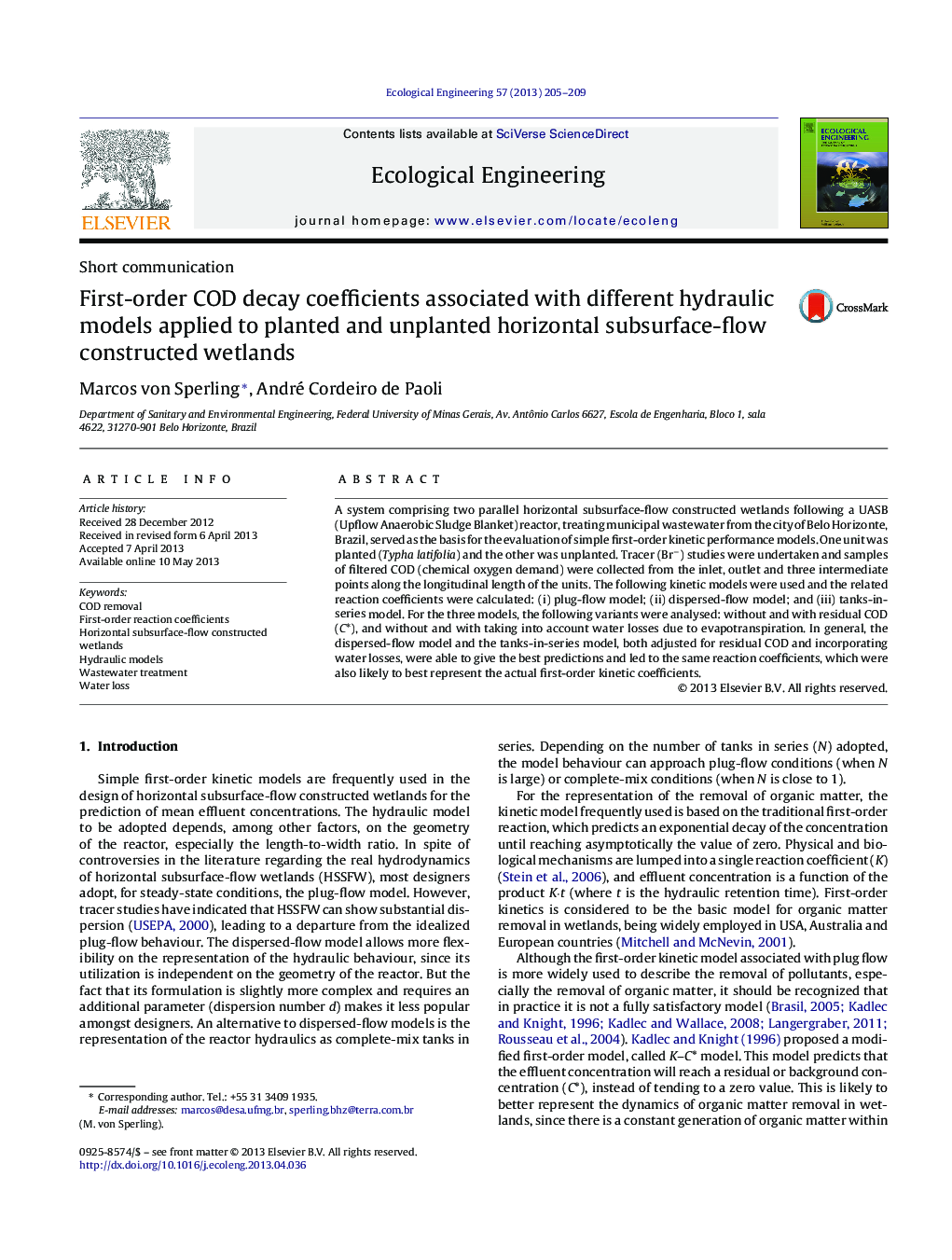| Article ID | Journal | Published Year | Pages | File Type |
|---|---|---|---|---|
| 6302611 | Ecological Engineering | 2013 | 5 Pages |
Abstract
A system comprising two parallel horizontal subsurface-flow constructed wetlands following a UASB (Upflow Anaerobic Sludge Blanket) reactor, treating municipal wastewater from the city of Belo Horizonte, Brazil, served as the basis for the evaluation of simple first-order kinetic performance models. One unit was planted (Typha latifolia) and the other was unplanted. Tracer (Brâ) studies were undertaken and samples of filtered COD (chemical oxygen demand) were collected from the inlet, outlet and three intermediate points along the longitudinal length of the units. The following kinetic models were used and the related reaction coefficients were calculated: (i) plug-flow model; (ii) dispersed-flow model; and (iii) tanks-in-series model. For the three models, the following variants were analysed: without and with residual COD (C*), and without and with taking into account water losses due to evapotranspiration. In general, the dispersed-flow model and the tanks-in-series model, both adjusted for residual COD and incorporating water losses, were able to give the best predictions and led to the same reaction coefficients, which were also likely to best represent the actual first-order kinetic coefficients.
Related Topics
Life Sciences
Agricultural and Biological Sciences
Ecology, Evolution, Behavior and Systematics
Authors
Marcos von Sperling, André Cordeiro de Paoli,
